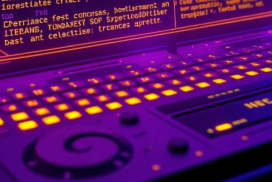In the ever-evolving landscape of cybersecurity, protecting endpoints—such as laptops, desktops, and servers—is crucial. One of the most effective tools for safeguarding these devices is Endpoint Detection and Response (EDR). This article will explain what EDR is, how it works, and why it is essential for modern cybersecurity. What is EDR? Endpoint Detection and Response Read More …
Tag: tmack
Tools :: GhidraMCP
GhidraMCP is an innovative Model Context Protocol (MCP) server designed as a plugin for Ghidra, the open-source reverse engineering framework. Its primary purpose is to empower Large Language Models (LLMs) with the capability to autonomously reverse engineer applications by exposing core Ghidra functionalities to MCP clients. This tool streamlines tasks such as decompiling and analyzing Read More …
Uber’s Multi-Cloud Secrets Management
In the article “Building Uber’s Multi-Cloud Secrets Management Platform,” Uber discusses its approach to managing sensitive information, known as “secrets,” across various cloud environments. For someone new to IT, it’s important to understand that secrets can include passwords, API keys, and other confidential data that applications need to function securely. Uber faced challenges in ensuring Read More …
AZ 900 Study Guide
Core Concepts Describe Cloud Concepts – What is the cloud? Describe Azure Architecture & Services – What services are there? Describe Azure Management & Governance – How you can manage things. In simpler terms, cloud computing uses a network to connect users to a cloud platform where they request and access rented computing services. Read More …
IDPS – Intrusion Detection and Prevention Systems
In today’s digital world, where cyber threats are increasingly sophisticated, protecting information systems is more critical than ever. One of the key tools in cybersecurity is the Intrusion Detection and Prevention System (IDPS). This article will explain what an IDPS is, how it works, and why it is essential for safeguarding networks. What is an Read More …
AutoPwnKey: An Evasive Red Teaming Framework
Source AutoPwnKey is an open-source red teaming framework and testing tool developed by CroodSolutions, leveraging AutoHotKey (AHK) for its evasive capabilities. The project aims to raise awareness about the security risks posed by scripting languages like AHK and AutoIT, which are often overlooked by traditional security solutions. Designed to aid red teams in penetration testing, Read More …
DAC – Discretionary Access Control
Let’s break down Discretionary Access Control (DAC) in a way that’s easy to grasp for those new to IT. Imagine you create a document on your personal computer. You, as the owner of that document, have the power to decide who else can open it, edit it, or even just see its name in the Read More …
GitHub Actions Supply Chain Attack
Source The recent GitHub Actions supply chain attack represents a multi-layered, targeted compromise that initially focused on Coinbase before escalating into a widespread incident affecting thousands of repositories. This sophisticated attack exploited critical CI/CD misconfigurations and leveraged leaked Personal Access Tokens (PATs) to gain unauthorized access, potentially leading to data breaches and code tampering. The Read More …
Notes :: SCIM Hunting
In the blog post “SCIM Hunting,” the author explores the Security Assertion Markup Language (SAML) and System for Cross-domain Identity Management (SCIM) protocols, which are essential for managing user identities and access in cloud environments. For someone new to IT, understanding these protocols is crucial, as they play a significant role in ensuring secure access Read More …
Navigating the Challenges of Containers and Kubernetes Deployment
Containers and Kubernetes present several limitations and challenges that organizations must consider. One significant issue is platform complexity. While these technologies are versatile, they are not always necessary for every application. For instance, using Kubernetes to orchestrate static Commercial Off-The-Shelf (COTS) applications can be excessive, as the complexity of Kubernetes may outweigh any potential business Read More …



